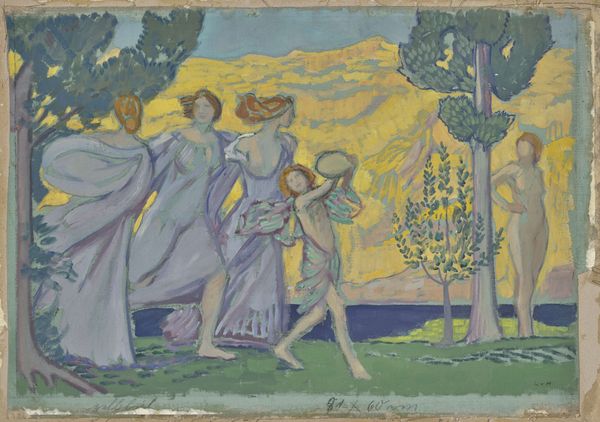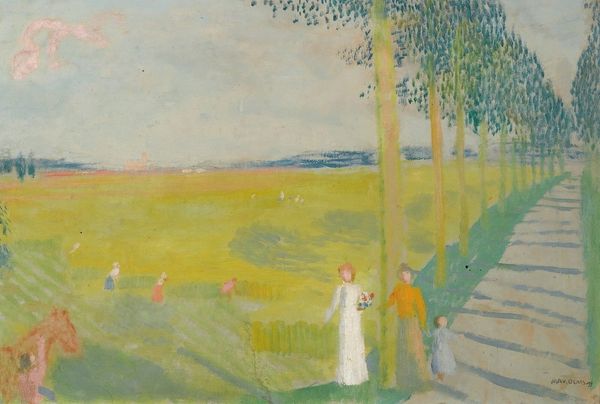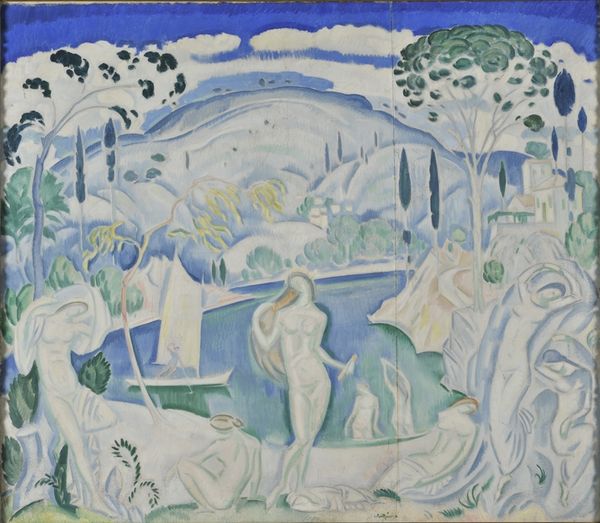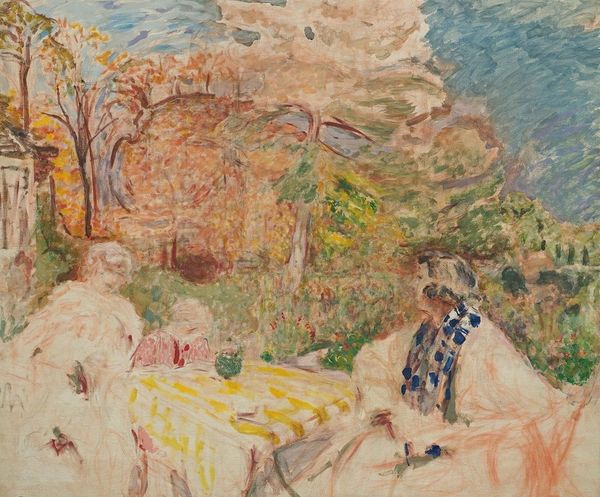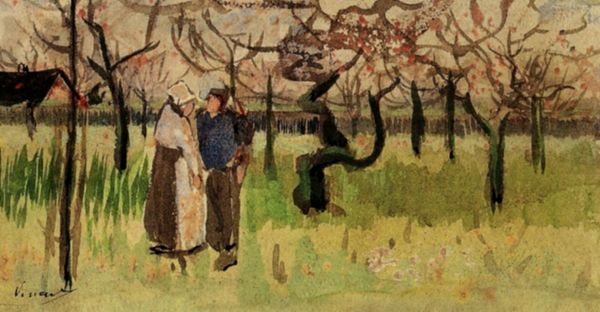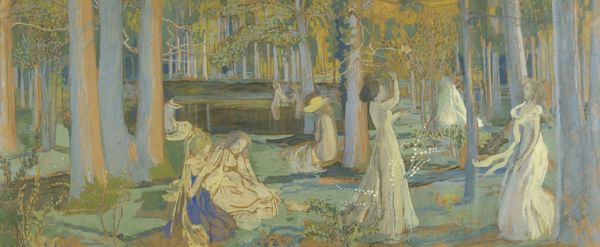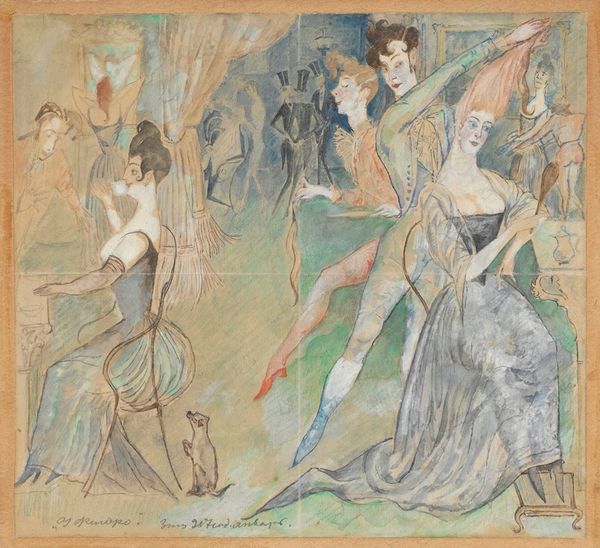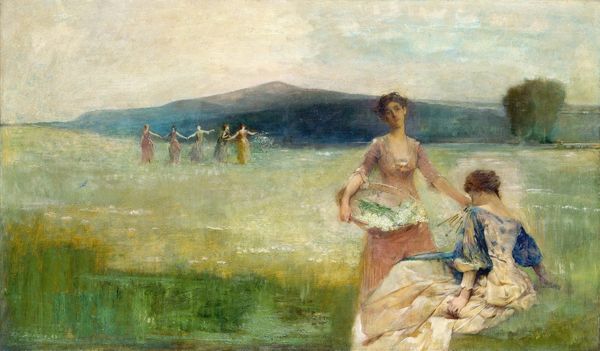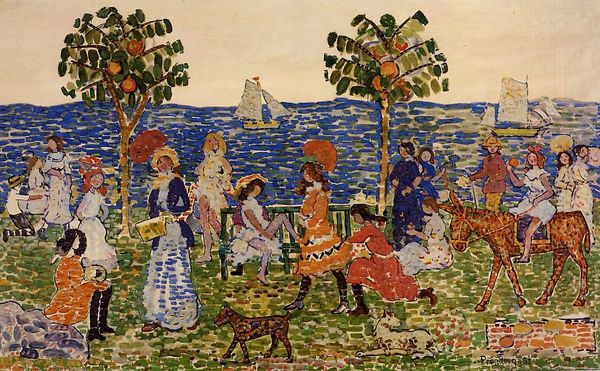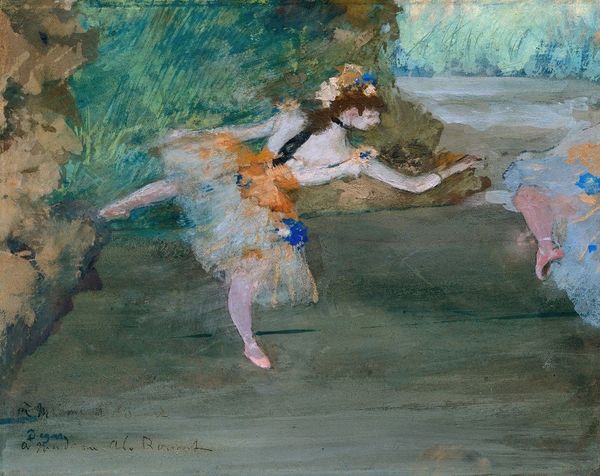
painting, oil-paint
#
figurative
#
painting
#
oil-paint
#
landscape
#
figuration
#
oil painting
#
group-portraits
#
symbolism
#
genre-painting
Copyright: Public Domain: Artvee
Curator: Here we have Franz von Stuck’s "Dancing Circle," painted in 1910, rendered in oil on canvas. What are your first impressions? Editor: It’s… ethereal, almost ghostly. The color palette feels deliberately muted, a stark contrast to the jubilant activity of the figures. The scale adds to this strange dichotomy; a celebration yet somehow subdued. Curator: Let's consider the canvas itself. Look at the visible brushstrokes, particularly in the sky. The artist employed a dry brush technique, which adds a certain textural quality. Note the thinly applied layers of paint; this isn't about concealing the materials but exposing the work involved. Editor: The circular dance is a pretty universal symbol, isn't it? A representation of unity, cyclical time, and eternity in many cultures. The placement of the women on this hilltop strengthens this as a rite or ritual taking place away from the concerns of civilisation. It's heavy with the symbols of Arcadian escapism. Curator: I’d also suggest there's a definite dialogue here with academic art training combined with the avant-garde. The figuration is expertly handled—the anatomy is convincing—but then he undermines it all with this highly stylized handling of materials, and his limited palette, to stop any accusations of illusionism. He highlights the making to show how he has crafted this image. Editor: Agreed. And that draped cloth abandoned to the lower right? I keep coming back to it. It almost anchors the scene, lending a weightiness to these dancing figures. The suggestion of hedonistic pleasures or revelry and abandon makes this an image rich in symbolism. Curator: I appreciate how von Stuck refuses to create a polished surface, making a painting that is almost aggressively material despite the softness of the scene. In highlighting its production and materials he almost challenges our view that only grand subject matter makes high art. Editor: In a sense, by contrasting the image of revelry with its understated palette and technique, von Stuck presents us not just with a snapshot of joyous release, but asks how collective memories and rituals come to hold the weight they do within society. Curator: Indeed, von Stuck’s piece is not just a painting, it is evidence of a making process, with the artist knowingly embracing all of its properties to become another layer within the symbolism itself. Editor: Yes, he has layered meaning over method to suggest how humanity has continuously encoded the natural world with meaning for centuries.
Comments
No comments
Be the first to comment and join the conversation on the ultimate creative platform.
